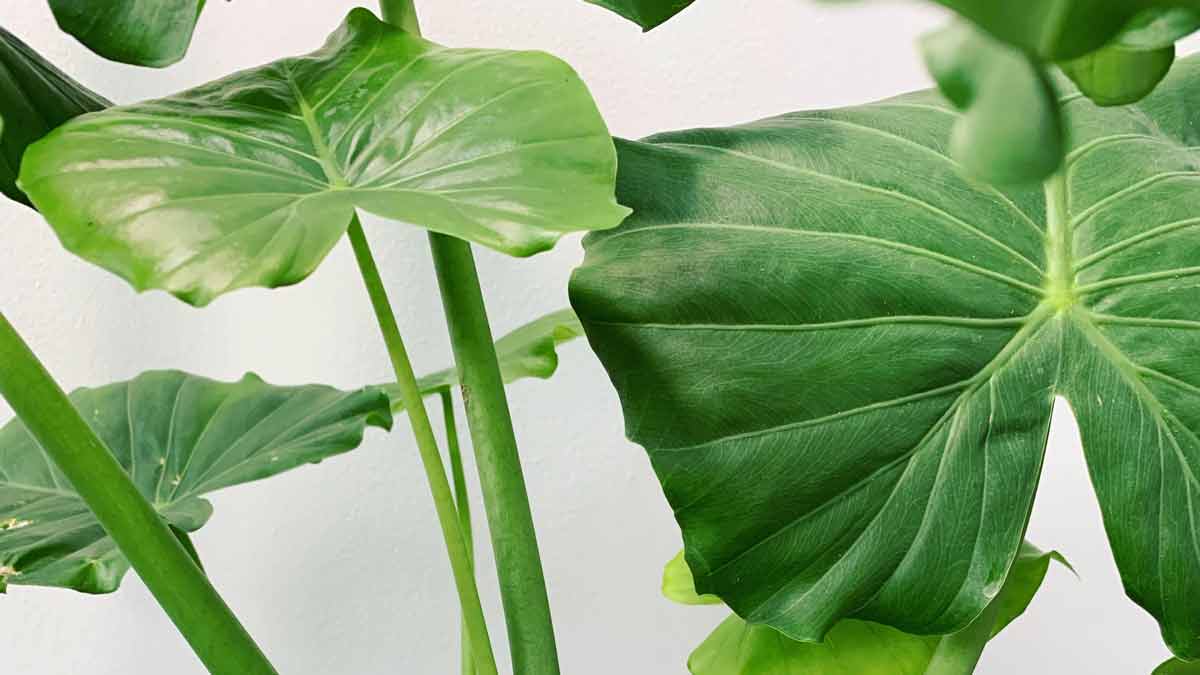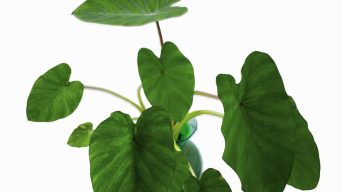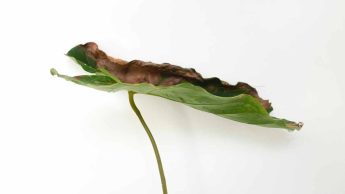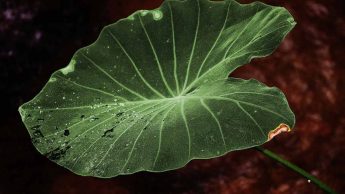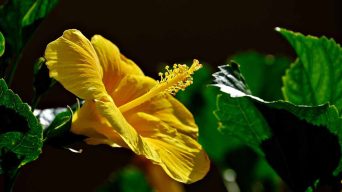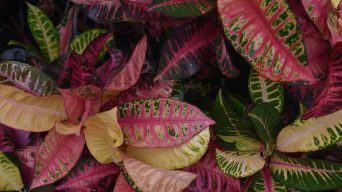Elephant Ear leaves droop due to underwatering, overwatering, low humidity, insufficient sunlight, pests, transplant shock, or heat stress. To revive them, adjust watering, enhance humidity, provide ample sunlight, address pests, be cautious during transplanting, and protect from excessive heat. Regular care ensures healthy, vibrant Elephant Ear plants.
Elephant Ear plants, cultivated for their expansive, heart-shaped leaves, originate in tropical regions and thrive in warm, humid climates.
They are commonly cultivated annually or as indoor plants in less conducive conditions in cooler environments.
Various factors could contribute to this issue if your Elephant Ear plant exhibits drooping leaves.
To understand why your plant’s leaves are drooping, continue reading and discover effective solutions.
Understanding and Addressing Elephant Ear Leaf Drooping
If you have an Elephant Ear plant (Colocasia esculenta), you’re likely acquainted with its sizable, heart-shaped leaves.
These leaves, reaching up to three feet in length and two feet in width, can make a striking addition to your landscaping.
However, encountering drooping Elephant Ear leaves may leave you wondering about the cause.
Fortunately, there are several reasons for this issue, each with its corresponding solution.
Let’s explore seven potential causes of drooping Elephant Ear leaves and how to remedy them.
1. Underwatering
One of the most common problems with plants is underwatering when they don’t receive enough water to meet their needs.
This can be caused by insufficient water or excessive water loss due to the plant’s growing conditions.
Underwatering is a common problem with elephant ears because they have large leaves that require a lot of water to stay hydrated.
Identifying Underwatering
If you think you might be underwatering your plants, there are a few things you can look for to be sure.
The most obvious signs are drooping and wilting.
When a plant doesn’t have enough water, it will start to lose turgor, which is the rigidity in its cells and tissues.
In some cases, diseases can cause this, but the plant likely needs more water if there’s no other explanation.
Another sign to look for is dry soil. If the ground around your plant feels dry to the touch, it’s probably time to give it a drink.
There are a few exceptions to this rule – some succulents, like cacti, don’t need much water because they store it so well.
Another way to tell if a plant needs more water is to look at the leaves.
If the tips and edges of the Elephant ear leaves are browning and drying out, it’s a sure sign that the plant is thirsty.
If you don’t give it more water soon, all the leaves will brown and die.
Finally, if you are chronically underwatering a plant but still giving it enough water to survive, you’ll notice its growth is slower than usual or stunted.
Addressing Underwatered Plants
It’s time to act once you’ve determined your plant is underwatered.
The first step is to give the plant a good soaking.
Water it until the soil is saturated and water comes out of the pot’s drainage holes.
If the plant is in a container without drainage holes, be careful not to overwater it.
Let the plant drain for a few minutes before putting it back in its spot.
After giving the plant a good soaking, check the soil regularly to see if it’s dry.
If it is, water the plant again.
You might need to water it more frequently than usual until it recovers from underwater.
2. Overwatering
While underwatering is a common problem, overwatering is just as common – if not more so.
Overwatering is when a plant receives too much water, which can be as deadly as underwatering.
Too much water can cause the roots to rot, preventing the plant from absorbing nutrients and water.
Recognizing Overwatering
If you think you might be overwatering your Elephant ear plants, there are a few signs to look for.
The first is yellowing or wilting leaves.
If the leaves turn yellow, it’s a sign that the plant is struggling to take up water.
Several things can cause this, but overwatering is one of the most common.
Another sign to look for is brown or black leaves.
If the leaves turn brown or black, it’s a sure sign that they’re rotting.
This is usually caused by too much water, but several other factors can also cause it.
If the leaves are rotting, they will eventually fall off the plant.
Another sign of overwatering is mushy or soft stems.
If the stems of your plant are soft or mushy, it’s a sign that they’re rotting.
This is usually caused by too much water, but several other factors can also cause it.
If the stems are rotting, the plant will eventually collapse.
Finally, overwatering can cause stunted growth.
If a plant receives too much water, it won’t be able to take up the nutrients it needs to grow.
As a result, the plant will stop growing or even die.
Correcting Overwatered Plants
If you think you might be overwatering your plant, the first step is to stop watering it.
Let the soil dry out completely before giving it any more water.
Once the soil is dry, check it regularly to see if it needs more water.
If it does, water the plant thoroughly, but let the soil dry out completely before watering it again.
The water must drain out of the pot so the roots don’t sit in water.
If you’re unsure if your plant is overwatered or underwatered, it’s best to err on caution and let the soil dry out completely before giving it any more water.
3. Low Humidity
While most plants like a humid environment, Elephant Ears are susceptible to low humidity.
This is because they’re native to tropical environments where the air is moist and humid.
In their natural habitat, they receive daily rain showers that moisten the air around them.
If the air is too dry, the leaves will start to droop, and the tips will turn brown.
The plant will also stop growing.
Detecting Low Humidity Stress
There are a few signs to look for if your plant suffers from low humidity.
The first is wilting leaves.
If the leaves are wilting, it’s a sign that the plant is struggling to take up water.
Several things can cause this, but low humidity is one of the most common.
Another sign to look for is brown or black leaves.
If the leaves are turning brown or black, it’s a sure sign that they’re drying out.
This is usually caused by low humidity, but several other factors can also cause it.
If the leaves dry out, they will eventually fall off the plant.
Another sign of low humidity is stunted growth.
If a plant isn’t receiving enough moisture, it won’t be able to take up the nutrients it needs to grow.
As a result, the plant will stop growing or even die.
Treating a Plant Affected by Low Humidity
If you think your indoor plant is drooping due to low humidity, you can do a few things to help it.
First, try misting the leaves with water.
This will help to raise the humidity around the plant.
You can also try placing the pot on a tray of pebbles and water.
The water will evaporate and raise the humidity around the plant.
Finally, you can try using a humidifier.
This will help raise the humidity in the room, not just around the plant.
4. Not Enough Sunlight
Elephant Ears need a lot of sunlight to thrive.
In their natural habitat, they grow in full sun or partial shade.
This means they need at least six hours of direct sunlight daily.
If they don’t get enough sunlight, the leaves will start to droop, and the plant will stop growing.
Signs of Insufficient Sunlight
There are a few signs to look for if you think your plant is not getting enough sunlight.
The first is leggy growth.
If the plant grows long and spindly, it’s a sign of not receiving enough sunlight.
The plant will also stop growing.
Another sign to look for is pale leaves.
If the leaves are pale, it’s a sign that they’re not receiving enough sunlight.
The plant will also stop growing.
Remedying a Plant Deprived of Adequate Sunlight
If you think your plant is not getting enough sunlight, you can do a few things to help it.
First, try moving it to a sunny location.
If the plant receives direct sunlight for at least 6 hours each day, it should start to recover.
West- or south-facing windows are ideal.
If you can’t move the plant, use a grow light.
Grow lights mimic the sunlight and will help the plant to grow.
5. Pests
Pests can also cause Elephant Ear leaves to droop.
Aphids, mealybugs, and scale are all common pests that can attack Elephant Ears.
These pests suck the sap from the plant, which weakens it and causes the leaves to droop.
Identifying a Pest Infestation
The best way to tell if your plant has pests is to look for small holes in the leaves or white spots on the underside of the leaves.
If you see either of these, your plant likely has aphids.
If your plant has scale insects, you’ll see small brown or black spots on the leaves. Scale insects suck the sap out of the leaves, which can eventually kill the plant.
If you have mealybugs, you’ll see white fuzzy patches on the leaves or stems. Mealybugs also suck the sap out of the plant, which can weaken it and cause the leaves to droop.
Managing a Plant Afflicted by Pests
If your plant has pests, you can do a few things to eliminate them.
First, try using a strong stream of water to blast the pests off the plant.
You can also try using insecticidal soap or neem oil.
Both of these will kill the pests without harming the plant.
Finally, you can use a natural predator such as ladybugs or lacewings.
These predators will eat the pests and help to control the population.
6. Transplant Shock
Elephant Ear leaves often droop due to transplant shock, a frequent issue associated with the plant’s relocation.
This occurs when the plant is transferred from one pot to another or transplanted into the ground.
The disturbance to the roots hinders the plant’s ability to acclimate swiftly to its new surroundings. Consequently, the leaves begin to droop.
Recognizing Transplant Shock
To determine if your Elephant Ear is in transplant shock, look for the following symptoms:
- The leaves are wilted and droopy.
- The leaves are discolored or have brown spots.
- The stems are weak and spindly.
If you see any of these symptoms, your plant is likely in transplant shock.
Treating a Plant in Transplant Shock
If your plant is in transplant shock, you can do a few things to help it recover.
First, make sure that the plant is getting enough water.
Transplant shock often occurs when a plant does not have enough moisture, so be sure to water it regularly. Second, provide the plant with some protection from the sun.
If the plant is exposed to too much sunlight, its leaves may become scorched. Instead, place the plant where it will receive filtered light or dappled shade.
Finally, give the plant some time to adjust to its new surroundings. With patience and care, your plant should soon recover from transplant shock and resume normal growth.
7. Heat Stress
Heat stress is another common cause of Elephant Ear plant drooping.
This usually happens when the plant is exposed to too much heat or direct sunlight.
The leaves will start to droop, and the plant may stop growing.
Detecting Heat Stress
To determine if your Elephant Ear plant is under heat stress, look for the following symptoms:
- The leaves are wilted and droopy.
- The leaves are discolored or have brown spots.
- The plant has stopped growing.
If you see any of these symptoms, your plant is likely under heat stress.
Managing a Plant Under Heat Stress
If your plant is under heat stress, you can do a few things to help it recover.
First, make sure that the plant is getting enough water.
Heat stress often occurs when a plant does not have enough moisture, so be sure to water it regularly.
Second, provide the plant with some protection from the sun.
If the plant is exposed to too much sunlight, its leaves may become scorched.
Instead, place the plant where it will receive filtered light or dappled shade.
Finally, place the plant in a cooler location if possible.
If the temperature is too hot for the plant, it will continue to suffer from heat stress.
Moving the plant to a cooler location can allow it to recover.
Elephant Ears are tough and resilient but can even suffer from problems.
Preventing Drooping Elephant Ear Plant Leaves
You can do a few things to prevent your elephant ear leaves from drooping.
- Make sure your plant is getting enough water. Elephant ears are native to tropical climates and need consistent moisture to thrive. Check the soil around your plant regularly and water it deeply whenever the top few inches of soil are dry.
- Avoid overwatering your plant. While elephant ears need consistent moisture, they can quickly become waterlogged if you give them too much water. Allow the top few inches of soil to dry out between watering sessions, and make sure your plant has drainage holes in the pot so excess water can escape.
- Place your plant in a sunny location. Elephant ears need bright indirect light to thrive. If your plant is not getting enough sunlight, its leaves may droop in an attempt to reach for more light.
- Fertilize your plant regularly. Like all plants, elephant ears need nutrients to grow and stay healthy. Use a balanced fertilizer formulated for indoor plants and apply it according to the manufacturer’s instructions.
- Inspect your plant for pests. Elephant ears are susceptible to various pests, including aphids, mealybugs, and spider mites. If you see any pests on your plant, treat them immediately with a natural pest control solution.
- Prune your plant regularly. Elephant ears can become leggy and overgrown if they’re not pruned regularly. Cut back the stems of your plant to encourage new growth and remove any brown or yellow leaves.
- Check for common diseases. Elephant ears are susceptible to a few common diseases, including leaf spot and root rot. If you see any signs of illness on your plant, treat it immediately with a fungicide or insecticide.
Following these tips can help prevent your elephant ear leaves from drooping.
Final Thoughts
Drooping elephant ear leaves are a common issue attributed to various factors, such as excessive or inadequate watering, fluctuations in temperature, or pest infestations. Taking proactive steps in plant care is crucial to maintaining their health.
Luckily, rectifying droopy leaves is generally straightforward. You can address this by adjusting your watering regimen or relocating your plant to a more suitable environment. In cases where pests are the issue, consider treating your plant with a natural insecticide.
Identifying the root cause of the problem is the key to restoring your elephant ear leaves to their normal state, making the resolution process straightforward.

